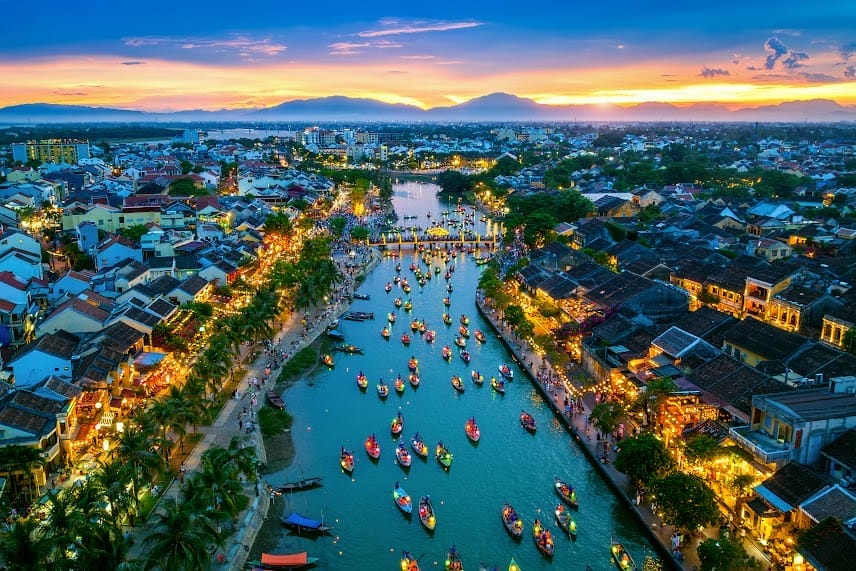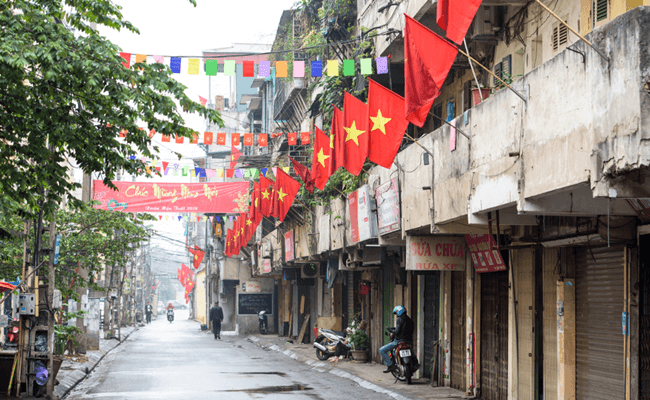The palace was built on an area of 12ha, bounded by four main roads – Nam Ky Khoi Nghia, Nguyen Du, Huyen Tran Cong Chua and Nguyen Thi Minh Khai – with its main gate looking out over Nam Ky Khoi Nghia Avenue.The palace was built over a three-year period from 1868-1871, following a colonial-style design by French architect Hermite.After the defeat of the French forces at Dien Bien Phu, the Geneva Agreement was signed in 1954 and France pulled out of Viet Nam. This heralded the total liberation of the north, but events in the south took a different turn.There, the US gradually replaced the French, installing Ngo Dinh Diem as Prime Minister. In September 1954, French General Paul Ely handed Norodom Palace to Diem, who rechristened it as the Independence Palace.
Diem was entirely dependent on US support; with their backing, he refused to carry out the Geneva Agreement pledge to hold free general elections for national reunification. Instead, he unilaterally established the Republic of Viet Nam in the southern part of the country, and proceeded to rule over it in an authoritarian and nepotistic fashion. As a result, discontent spread rapidly. On February 27, 1962, the armed forces staged a military coup. Two AD-6s dropped bombs on the Independence Palace, destroying the main portion of its left wing.Seeing that the building was beyond repair, Diem decided to raze it to the ground and erect a new one, much larger and stronger, on the same foundations.The new palace was designed by architect Ngo Viet Thu, for which he became the first Asian to win the Rome Laureate, France’s top prize for architecture.In designing the new Independence Palace, Thu struck an excellent balance between modern architectural style and traditional Oriental elements. For its layout, he adopted a Chinese framework, reflecting an Asian philosophy and way of life.The ground floor of the palace covers an area of 4,500sq.m, and the palace’s total area is 20,000sq.m.It includes 95 rooms and halls, each with its own decorative style that both matches its specific function and blends into the palace’s overall design.Construction began on July 1, 1962 and was completed on October 31, 1966. But it was delayed six months due to the coup d’ etat against Diem, which saw him and his younger brother Ngo Dinh Nhu assassinated on November 2, 1963.
Following Diem’s overthrow, the Sai Gon administration went through a period of political turbulence, including several more coups and purges, before Nguyen Van Thieu and Nguyen Cao Ky assumed power in June 1965.On October 31, 1966, the Thieu-Ky administration inaugurated the new Independence Palace. The following September, Thieu took up residence in the palace with his family. He lived and worked there for eight years.The first floor’s Grand Hall, the largest in the Palace, covers 448sq.m and was used as the venue for all formal occasions.In the last days of the Sai Gon regime in April 1975, this Grand Hall witnessed the successive departures of three presidents of the tottering southern administration.Once the general uprising and offensive of 1975 was launched, the Liberation Army began closing in on Sai Gon. Thieu announced his resignation on April 21 and fled the country three days later.Vice-President Tran Van Huong assumed the presidency for one week, but also quickly departed, handing power to Duong Van Minh, a retired general, on April 28.Two days later, the historic Ho Chi Minh Campaign saw the Liberation Army march on Sai Gon. At 10:45am on April 30, Tank No. 843, under Bui Quang Than’s command, rammed the Independence Palace’s side gate.Then, Tank No. 390, under Vu Dang Toan’s command, crashed through the main gate and made for the front yard.Bui Quang Than, promptly ran up to the balcony of the fourth floor, took down the flag of the Republic of Viet Nam and hoisted the flag of the South Viet Nam Liberation Front.
At that moment, in the Grand Hall, President Duong Van Minh and the Sai Gon cabinet unconditionally surrendered to the revolutionary power.Never again would a president live in the palace. Nor would it ever be known as “the dragon-head palace”, so called because the dragon was Thieu’s favourite symbol of power.In November, 1975, the Grand Hall was the venue for a political conference on the mechanics of reuniting north and south.To mark this event’s historic significance, the palace’s name was changed to the Reunification Palace.
Besides the famous Great Hall, visitors to the palace will see several other important rooms on the first floor.One is the Cabinet Hall, which contains a large oval table and chairs.Nearby is the Banquet Room, where the president hosted formal receptions, which is graced with an oil painting by Ngo Viet Thu for the inauguration of the palace in 1966.The painting gives expression to two Vietnamese ideals: the beautiful and bountiful land, and the peaceful landscape. The painting includes typical landscapes from the north, centre and south of the country.
The second floor was used for official purposes – government meetings, administrative work, receiving local and foreign guests, and so on – as well as hosting the living quarters of the president’s family.A remarkable feature of the second floor are the marble curtains, whose bamboo knots represent a gentleman’s lack of jealousy and animosity.The central staircase on the second floor was the scene of an event that shattered the morale of the Sai Gon regime during its last month in power.
The palace’s third floor was devoted to the president’s family, including a library, a hall for the first lady’s receptions, a private cinema and theatre, and a rumpus room.
The fourth floor bears the name Tu phuong vo su, meaning “cool and quiet with winds coming from all directions”.The architect envisioned this floor as a relaxation space for the president and high officials, but Thieu used it for evening balls.The palace’s rear yard served as a helicopter pad, where a helicopter always stood ready for the president.The basement was the nerve centre of the puppet regime’s war effort. The area comprised two underground trenches, connected to each other via small tunnels of reinforced concrete, safe from bombing or shelling. The upper tunnel – 1m below the surface, built of steel and concrete 60cm thick and covered with 5mm steel sheets – could withstand 500kg bombs. In this tunnel was an operations room and a reserve radio station with modern US equipment. Here, Thieu broadcast statements to rally his troops, and repealed the cease-fire made during Tet 1968, when the Liberation Army launched attacks on all the key infrastructure of the puppet regime in Sai Gon.
In 1976, the Vietnamese Government labelled the Reunification Palace as a historic cultural relic. Every day, the building welcomes visitors from Viet Nam and abroad.Pupils and students, in particular, visit the palace to learn more about the nation’s history and honour.It is also now used as a government convention centre, and as a guest house for the Party, Government and HCM City People’s Committee to receive international high-ranking guests or hold flagship conferences, workshops, seminars or exhibitions.
The passage of time has taken its toll on quite a few parts of the palace, and a large-scale renovation project has been underway since 1999.
And in a historic full-circle, the project managers have invited the original architect Ngo Viet Thu and chief constructor Phan Van Dien to advise them on preserving this significant historical monument for future generations to admire.






